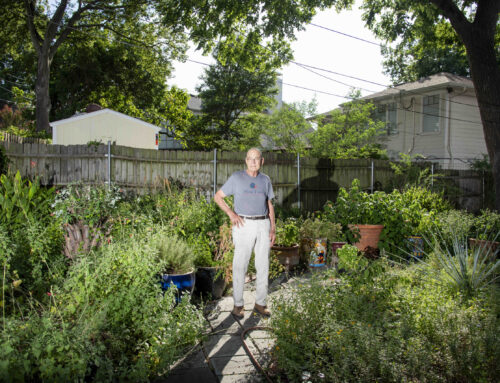Retail businesses are struggling, unless they serve turkey and ham on wheat
The recession has wrecked havoc with retail development all over this part of town. For lease signs are posted up and down Greenville and in most of the strip centers in our neighborhood. Meanwhile, most of the Two Rows brewpub space in Old Town has been vacant for a couple of years, Prescott Realty’s project at Greenville and Yale, on the old Shamburger site, has been vacant almost as long, and plans to redevelop part of the Gaston-Garland intersection have been on hold even longer.
Yet one thing has not slowed: We are being over-run with fast food restaurants, and not just any fast food restaurants — sandwich places. When Pot Belly opened on Greenville this spring, it was the eighth sandwich place along upper Greenville between Lovers and Park Lane. It joined Subway, Baker Bros., Jersey Mike’s, Schlotzky’s, Quizno’s and Texadelphia. (And by the time you read this, there may well be one or two more, given all the empty storefronts.)
“Actually, this isn’t as surprising as it seems,” says Ed Fox, the SMU professor who is a national authority on the retail business. “The casual dining business has been getting killed in the recession, or it has been [killed]. People have been eating out less, and they have been spending less. And that brings them to quick-serve restaurants.”
Quick-serve restaurant is the industry term for what the rest of us call fast food, and Fox’s point is well taken. The National Restaurant Association’s restaurant performance index, which tracks the health of the industry, has been in negative territory for 28 consecutive months. So it does make some kind of economic sense to see so much fast food development — especially since the sandwich places have positioned themselves as healthier alternatives to traditional fast food.
In addition, given the way the restaurant business works, franchise operations — and most of the sandwich places are franchises — are in a better financial condition to open new locations during a recession. It’s easier for them to borrow money, even in this credit crunch, and that makes it easier for them to take advantage of the lower real estate prices that have been part of the recession.
In this, the rash of sandwich openings is part of the larger trend in local retail development, Fox says — the shift from merchandise retail to service retail that has been going on for more than a decade. Bookstores have been replaced by dry cleaners, hardware stores have been replaced by nail salons, and shoe stores have been replaced by workout centers.
Which raises the question: When the recession ends, what’s going to happen to all of the empty storefronts in places like Hillside Village, Old Town and Casa Linda, as well as all of the retail development waiting to be built? Are we going to see even more chain sandwich restaurants?
This, in fact, is the question at the center of the retail and development business these days. No one is quite sure what is going to happen, and most people freely admit that. Says Fox: “All of the effects of the recession still aren’t completely understood.”
Will consumers return to their free-spending ways and flock to malls and power centers (the bigger strip centers with tenants like PetSmart and Bed Bath & Beyond)? Or will we continue to watch what we spend, opting to shop locally instead of at a mall 20 minutes away? If the former, then we’ll almost certainly see more sandwich restaurants and similar sorts of national chain service retailers in our neighborhood.
But some experts see an entirely different scenario, in which small merchants return to local strip centers. They won’t necessarily be independent retailers, but national and regional chains that want to reach consumers who have given up on malls. Hence the rumors this spring that Best Buy wanted to buy Radio Shack.
The only question then? Where will the sandwiches places go?





